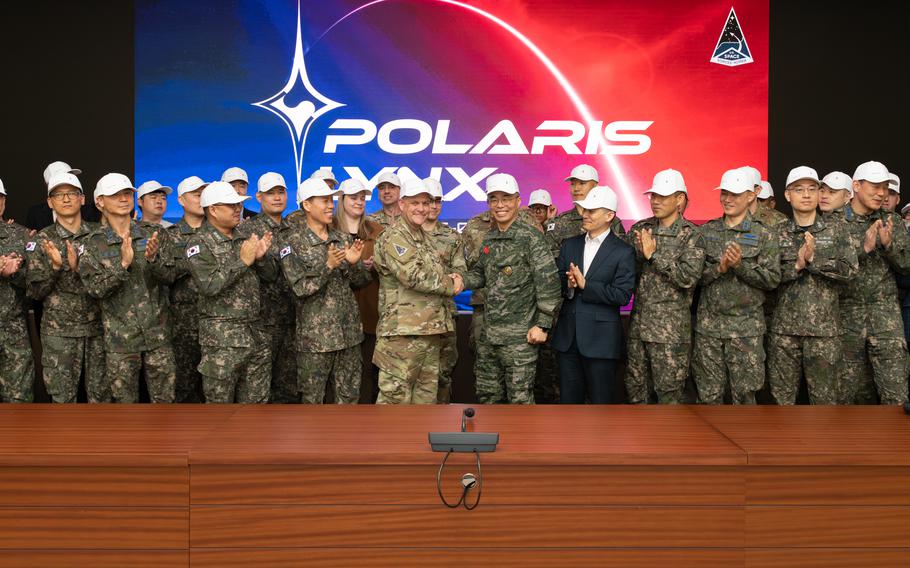
Participants gathered for a group photo during the Polaris Lynx exercise in South Korea, May 1, 2025. (South Korea Joint Chiefs of Staff)
U.S. Space Forces Korea recently participated in its first space-defense tabletop exercise alongside South Korean government and military space experts, including representatives from the Ministry of National Defense and Joint Chiefs of Staff.
Polaris Lynx brought together 40 participants to simulate responses to threats targeting satellites, according to a Friday news release from the Joint Chiefs.
Scenarios included enemies jamming the GPS system and threatening satellites with close-up maneuvers, the release said. It also incorporated elements from recent global events and considered the strategic and diplomatic implications of defensive space operations.
The exercise featured “an in-depth discussion on mutual defense capabilities development against hostile spatial threats,” according to the release.
“Polaris Lynx was a fantastic success story, bringing together the US and [South Korea] for an effective table-top exercise, focusing primarily on the improvement of command and control within the Space Domain,” Air Force Maj. Rachel Buitrago, a spokeswoman for U.S. Space Forces Korea, said in an email Friday.
The exercise enhanced the allies’ combined ability to respond to threats in space and demonstrated the Space Force role in USFK, she said.
The event comes amid growing concerns over space security in the region. North Korea has continued attempts to expand its satellite fleet, which includes three now in orbit. The country failed three times last year and twice in 2023 to launch additional satellites.
South Korea, by contrast, has successfully launched four military surveillance satellites, most recently on April 22 aboard a SpaceX rocket from Cape Canaveral, Fla.
U.S. Space Forces Korea, established in December 2022, plays a key role in monitoring North Korean missile activity, including tracking and identifying launches using surveillance satellites. In March 2023, the unit’s first commander, Lt. Col. Joshua McCullion, outlined its mission to identify missiles during their preparation phase.
In addition to Polaris Lynx, Space Forces Korea has taken part in other joint exercises on the peninsula, including the large-scale Freedom Shield drills.
Polaris Lynx stemmed from a November meeting of the Space Cooperation Working Group in Washington, D.C., where officials from the U.S. and South Korea agreed to hold joint counter-space threat training.
South Korean agencies participating included the Joint Chiefs and other military officials, experts from the Ministry of National Defense, Ministry of Foreign Affairs, Korea AeroSpace Administration, Korea Aerospace Research Institute and the Korea Astronomy and Space Science Institute.
Observers included South Korea’s Agency for Defense Development and U.S. Forces Korea.
Stars and Stripes reporter Yoojin Lee contributed to this report.